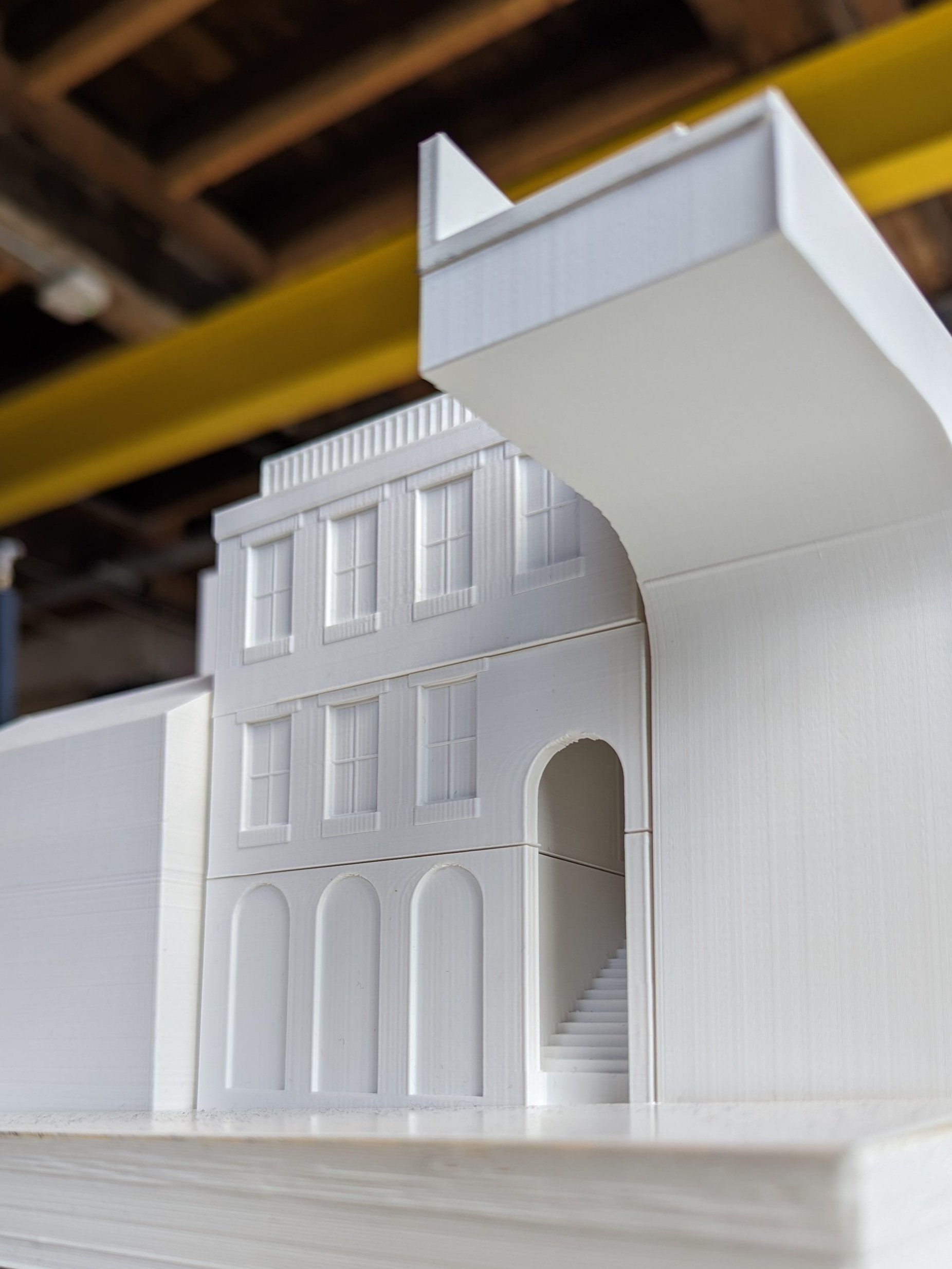Printing concrete! (and other shenanigans)
Article by Liam Marsden
As a practice, we're always looking to push boundaries and find innovative new ways to improve our design process. I recently attended a 3D printing workshop at Manchester Met's PrintCity facility, where I had the chance to see firsthand how far this technology has come since my university days. It provided a great insight into how 3D printing can transform the way we work and deliver projects.
Site Model
The workshop allowed us to develop a site model of our Underbanks project to be used in future design iterations and consultations
3D printing can be a useful design tool to visualise early design concepts
Through the workshop we explored the use of additive manufacturing in plastics, resins, clay, and even concrete. The technology has advanced in recent years and aims to reduce waste and promote sustainability in the manufacturing process by reducing the time and cost of prototyping and allowing for greater customisation and flexibility in design. 3D printing can be a useful design tool to visualise early design concepts and create physical models to compare massing solutions.
..one of the most exciting areas for me was the latest advances in 3D-printed concrete
While concept modelling is a strong area of focus, one of the most exciting areas for me was the latest advances and uses of 3D-printed concrete in construction. As a material that has been used for many years, there is a great opportunity to increase design flexibility, reduce material wastage and improve construction time. I was fascinated to see how the technology could be used to produce increasingly complex shapes and designs that would be challenging and highly time-consuming with traditional construction methods. This allows for more innovative designs, both structurally and aesthetically.
At PrintCity they are currently undertaking research into the reuse of demolition aggregates within the concrete mix, to provide a more sustainable concrete solution, that looks to utilise materials that would otherwise be taken to landfill. I can see how sites where structures are no longer viable, whether structurally or commercially, can be reused and reconstituted within the construction of the new building.
As Architects, I believe it is essential to keep up with the latest technologies and constantly strive to improve the construction industry.
But it's not just the construction industry that can benefit from 3D printing technology. During the workshop, I was impressed by how other industries are adopting 3D additive manufacturing and 3D scanning technologies. One company that fabricates rockets is using 3D printing to produce prototypes in-house, streamlining their production process. And a train engineer is exploring solutions for digitally archiving historic steam engine parts, that can be printed as needed to form cast moulds. A process that would otherwise be highly labour intensive for parts that are often no longer available.
As Architects, I believe it is essential to keep up with the latest technologies and constantly strive to improve the construction industry. Whether through more rigorous concept design and pushing the boundaries of a project or streamlining the construction process to improve the viability and maximise a project’s design quality.
Whilst the technology may still be in its relative infancy within construction, it could be an exciting few years!
Our PrintCity Cohort




